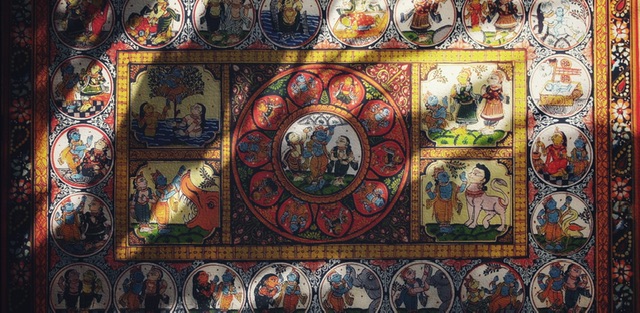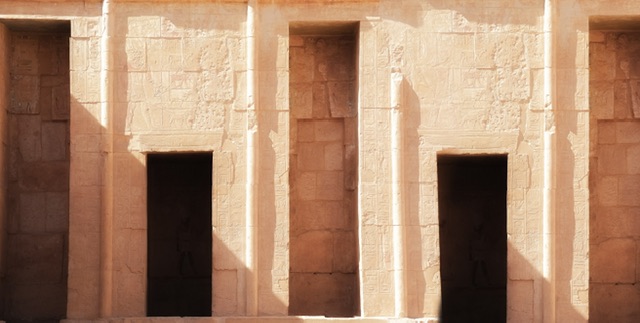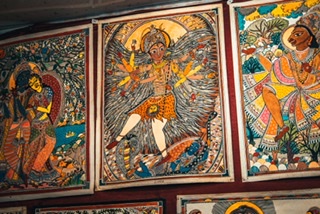Pattachitra refers to the 12th century art of storytelling through visuals, which originated in Bengal, India. The term is a combination of Sanskrit words, ‘patta’ meaning cloth, and ‘chitra’ meaning picture and is typical of a framed scroll painting depicting ancient events, social evils or local folklores. The person who makes and tells stories using a Pattachitra is called a Pattua.
The art form makes use of indigenous paints derived from a mixture of gum of wood apple tree as a base and locally available pigments like turmeric yellow and lamp soot black.
While Ekachitra or Choukapatta comprises many small square (chouka) pattas depicting one continuous story, Dighalpatta contains numerous paintings portraying a delicately interwoven story with multiple parts. The latter is also called rolled-up of Joranopatta.
A dighalpat has bamboo sticks at both its ends and is rolled up from the lower stick. The pattua holds the upper stick and then gradually opens the scroll displaying pictures sequentially. Then he folds the scroll downwards till he reaches the end. The length of dighalpat can go upto as long as 20 feet. The storytelling is often done through songs called patar-gaan.
Traditionally, joranos were never sold and were handed down through generations whereas choukas were sold for religious purposes.
According to locals, the patuas are descendants of Chitrakar, who was born to Vishwakarma and the celestial dancer, Ghritachi. As per historical sources, in the times of Chanakya, Pattachitras besides being modes of edutainment also served to transmit military information about enemies with pattuas serving as secret emissaries.
The role of pattuas as entertainers and social reformers has declined over time with the advent of electronic media. This vibrant art form is on the verge of extinction today and efforts are being made to safeguard the art form with design interventions and painting on innovative canvas.
PATTACHITRA OF BENGAL



